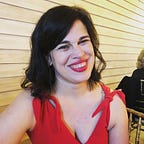Time Capsule: I’m Not Barbara Walters, but This is 2020 (Week 1)
I think about time a lot and the idea of composing a time capsule has always intrigued me. There seems to be a romance to it, a certain ephemeral quality and desire to be remembered that comes along with it.
I never buried a time capsule as a child, but over the years I’ve had several teachers assign tasks that were centered around self-reflection. I’ve evaluated my learning style as a metaphor for an ocean, I stuck pins in an apple for a photograph, I created playlists with explainers for a foreign language class.
The thing about these stories is that they were often intangible. The talismans didn’t last, and the digital write-ups would get lost with the next computer crash.
Thinking About a 2020 Time Capsule
Recently, the coronavirus pandemic has provided a chance for some reflection, and in a way, gave me the chance to survey my life. It was a chance to figure out both where I am going and where I have been.
It also made me realize a few things:
- Since late 2018 I’ve found that I tend to value experiences over stuff. I’ve learned that novelty tends to fade, and while I will regret something I purchased I never regret chances I’ve taken or things I’ve done.
- As a result of the first point, I’ve been intentional with spending on anything that will take up physical space.
- A lot of what I’ve purchased or things that I am proud of are digital and there’s not necessarily a physical counterpoint in my life to put into a time capsule.
- Despite interacting with objects, they don’t tell the whole story.
How to Assemble the Items
After taking these points into consideration I also thought about the communities on Instagram, and how users can find everything from a book haul from a local independent bookseller, to a package from Sephora, to artists promoting their work.
The thing about Instagram is that as much as it’s about photos and art, it’s also very much about documenting the highlights of life: trips, delicious aesthetically pleasing food, the book you’re reading at that moment.
In a way, Instagram is its own time capsule. It documents the ephemera surrounding us in a world where nothing is permanent.
For that reason, I chose Instagram as the staging ground for my project.
Process, Creation, Initiation
I created an account for my project called @tarotcardtimecapsule and began documenting a few objects I would like to include. I began taking photographs.
I first tried to stage my photos in a folding light studio, but the images were often sterile and didn’t give any context to how these objects existed within my story. So I eventually scrapped the light studio and started taking natural shots.
This ended up serving my purpose much better because as I started to think about what I wanted to convey with my time capsule I started thinking about context.
I tried to subvert the expectation that Instagram would be a highlight reel by letting the items exist in my environment. I didn’t clean up my space beforehand, I just let it all exist, and once I had the shots, I didn’t edit them except for Instagram cropping.
I wanted to acknowledge where I was or where an item was purchased from but didn’t feel like the “tag a person” feature, or including their handle in the caption was appropriate given how intensely personal some of my narratives could get.
To accomplish this, I decided to use the location setting instead. This would allow me to have a map of sorts, without tagging anyone needlessly in their feed.
But What About the Things That Exist in a Digital Space?
The thing too is that there are other bits that I wanted to put into this that don’t necessarily have a tangible counterpart. Paper and screenshots much help, but they don’t have the same tactility as an object.
As I started curating my time capsule, I realized that I didn’t want to literally put things in a box, so I started thinking about ways 2020 could be recorded, and supplemented with other media or references, and what I ultimately landed on was a tarot deck.
What’s Next?
Going into this week I’ll be taking the following steps:
- Laying out the 78 cards of a tarot deck including unique text
- Looking into DIY book printing to create an accompanying guidebook
- Creating a box that will hold old of these items and maybe a few tangental objects
